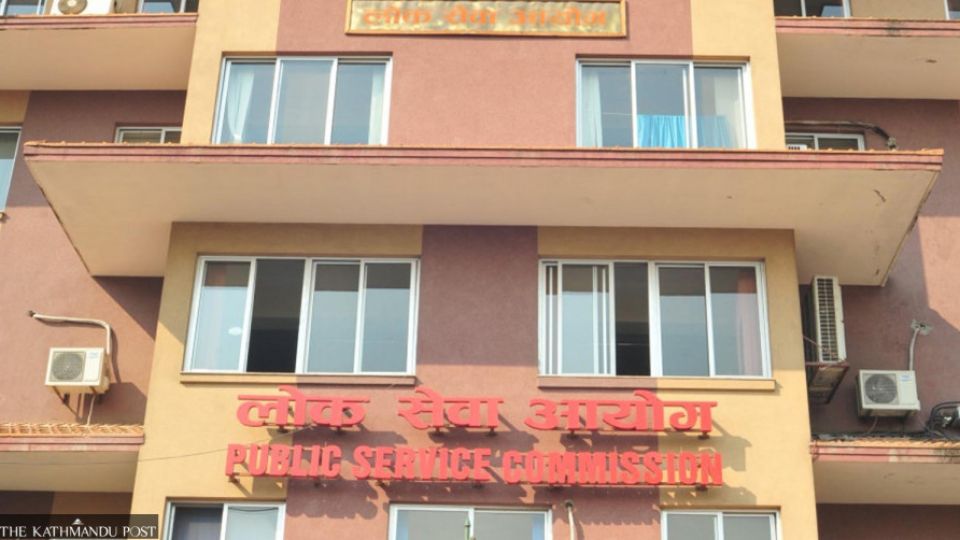July 29, 2022
KATHMANDU – Hill Bramhins constitute 12.2 percent of the population as per the 2011 census but they have had a dominant presence in the civil service for decades.
Despite the government reserving 45 percent civil service seats for indegenious people, Madhesis, Dalits, women and disabled people, the Hill Brahmins continue to get recruited in civil services in the highest numbers.
The Central Bureau of Statistics has yet to make public the population structure based on ethnicity and caste as per the census of 2021.
According to the 62nd Annual Report 2020-21 of the Public Service Commission, 47.83 percent of total candidates recommended by the commission based on the results of written tests and interview for recruitment in government service were Hill Brahmins.
The commission had recommended 138 candidates for recruitment in the civil service. Of them, 66 were from the Hill Brahmin category. And Bramhins from the mountainous region and the Tarai combined make 70 percent of the total candidates recommended for recruitment by the commission.
According to the report, 19.57 percent of the total candidates recommended for recruitment were from the mountain region and they essentially represent Hill Brahmins. And 2.17 percent of the candidates recommended for civil service were from the Tarai Brahmin category.
The number of Tarai Brahmins, according to the 2011 census, is 6.04 percent of the total population. Brahmins in total comprise 18.24 percent of the total population.
However, Devi Prasad Subedi, information officer at the Public Service Commision, said that the recommendations made in the last fiscal year do not give a true picture of the normal representation of different communities because the commission failed to make recommendations from among the candidates contesting under the “inclusion quotas,” categories with limited competition to encourage various marginalised groups to join the civil service.
“Due to the Covid-19 pandemic, we could not recommend many candidates who could be recruited in the civil service under the inclusion quotas,” said Subedi. “Had all the candidates under the inclusion quotas been included, the share of Brahmins in total recommendations would have come down.”
According to the commission, only 20 candidates, or 14.49 percent, were recommended for jobs under the inclusion quotas.
“Representation from indigenous nationalities and Dalits will grow in the current fiscal year 2021-22 because results of the exams taken under the inclusion categories in the last fiscal have come out this fiscal.”
The Civil Service Act reserves 45 percent seats for women, indigenous groups, Madhesis, Dalits, people with disability and those from backward regions. Open competition is held only for 55 percent seats.
“More Brahmin candidates joined the civil service in the last fiscal because results of the open competition category were released during the year,” said Subedi. “They have a longstanding tradition of joining the civil service and applicants from the group are also high.”
According to the commission, Bramhins were the largest single group applying for civil service jobs in the last fiscal year. As many as 135,548 or 25.41 percent Bramhins applied for civil service jobs in the last fiscal year, followed by 18.84 percent Chhetris and 6.48 percent Tharus.
However, even in normal times, Hill Bramhins continue to lead other caste groups in terms of fresh recruitments in civil service jobs.
According to the 61st Annual Report 2019-20 of the commission, 45.07 percent Hill Bramhins were recommended for recruitment while 2.96 percent Tarai Bramhins were recommended for recruitment in the civil service jobs.
Hill Brahmins comprised 38.87 percent of the total recommendations made by the commission in fiscal year 2018-19, according to its 60th Annual Report.
According to Umesh Mainali, former chairperson of the commision, Brahmins and Chhetris pass the exams in relatively higher numbers under open competition category while a large number of women candidates from these two groups pass the exams under the inclusion category.
“This helps these two groups to continue to have high representation in fresh recruitments in the civil service,” Mainali said.
Citing a study conducted by Tribhuvan University’s Department of Sociology in 2014-15, the Ministry of Federal Affairs and General Administration last year revealed in its publication ‘Prashasan’ that Hill Brahmins constituted 39 percent of total civil servants, followed by 22.3 percent Hill Chhetris.
Mainali said that the longstanding tradition of Brahmins entering the civil service helped the community to continue to join the civil service jobs which is also reflected in the number of applications representing the Brahmins community. “When one joins the civil service, he or she encourages their family members and kin to join the civil service,” Mainali said.


